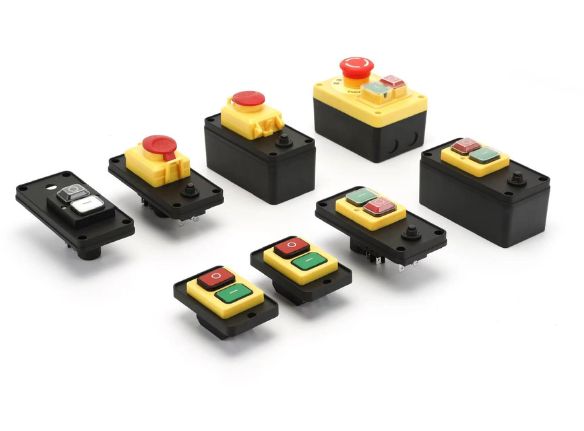
Introduction
Table saws are essential tools in woodworking, offering precision and efficiency. A crucial component of these machines is the power tool switch, which controls the operation of the saw. Understanding how these switches work is vital for safe and effective use.
Types of Power Tool Switches in Table Saws
- Single-Pole Single-Throw (SPST) Switches:
- Function: Simple on/off mechanism.
- Application: Found in basic table saw models.
- Operation: When the switch is flipped, it completes or breaks the circuit, controlling the power flow to the motor.
- Magnetic Switches:
- Function: Prevents accidental restarts after power loss.
- Application: Common in professional-grade table saws.
- Operation: Uses an electromagnetic relay to maintain the off state after a power outage, requiring manual reset to restart.
- Paddle Switches:
- Function: Provides easy access and increased safety.
- Application: Often retrofitted to enhance safety.
- Operation: Large paddle design allows for quick shut-off with a simple slap, ensuring fast response in emergencies.
Working Mechanism
- Activation:
- The switch connects to the table saw’s power source and motor.
- Flipping the switch completes the electrical circuit, allowing current to flow from the power source to the motor, starting the saw.
- Safety Features:
- Magnetic Switches: Ensure the saw doesn’t restart on its own after a power interruption.
- Overload Protection: Some switches include circuit breakers that trip if the current exceeds safe levels, protecting the motor and user.
- Shut-off:
- Flipping the switch to the off position breaks the circuit, stopping the current flow and halting the motor.
- Paddle switches allow for a faster and safer shutdown by slapping the paddle.
Installation and Maintenance
- Installation:
- Ensure compatibility with your table saw model.
- Follow the manufacturer’s instructions carefully, often involving connecting wires to designated terminals.
- Maintenance:
- Regularly check for wear and tear.
- Ensure connections are secure and free from dust and debris.
- Replace switches showing signs of malfunction to maintain safety.
Conclusion
Power tool switches in table saws are critical for safe and efficient operation. Understanding their types and working mechanisms can help users maintain their equipment better and operate it safely. Regular mainten


